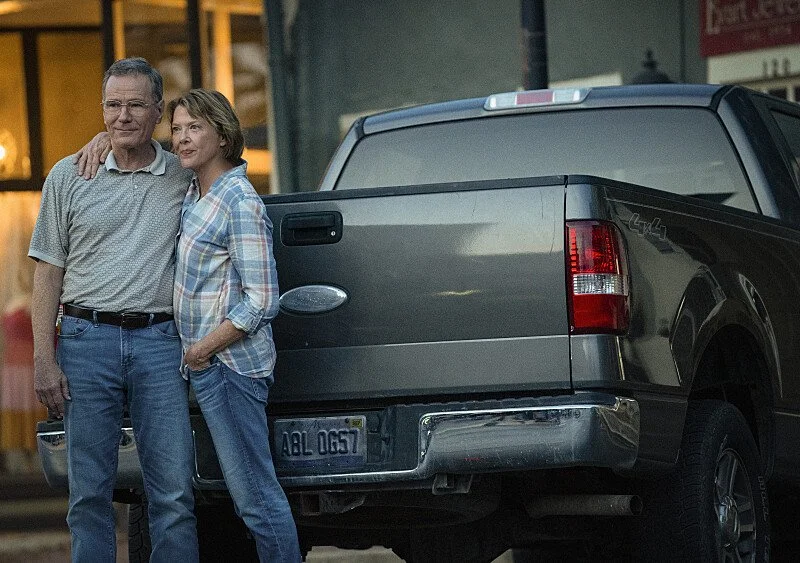"Jerry and Marge Go Large" - Film Review
Jerry (Bryan Cranston) has worked at the same Kellog’s factory in Evart, Michigan, for 42 years. He married his high school sweetheart, Marge (Annette Bening), and they raised their two kids (Jake McDorman and Anna Camp) in the small town. Jerry’s days with Kellog come to a close and he’s forced to figure out what his life looks like as a man without a regimented work schedule.
Above all else, math is Jerry’s strong suit. While at the local convenience store, he notices an advertisement for a new lottery game with the winning odds printed on the back of the ad. He sees this as a mathematical puzzle to solve and discovers an oversight: on weeks when the total reaches $5 million, and no one wins the jackpot, the $1 tickets would be worth more than their cost. Jerry and Marge decide to bet $8,000 and receive $15,700 in winnings, but that success proves to be just the beginning of their lottery journey.
Unfortunately, Jerry and Marge Go Large gets too bogged down in the math of it all. The more interesting story is that of Jerry and Marge themselves. The reason they dedicate so much of their golden years to the monotonous tasks their lottery endeavor entails isn’t strictly monetary. At a time when they’re feeling listless and without purpose, the lottery gives them a new lease on life. They have meaning and a goal to work toward.
Photo credit: Jake Giles Netter/Paramount+
As soon as they figure out how the lottery game can work to their advantage, Jerry and Marge bring in other people from their town. They create an LLC to funnel the winnings through, and townspeople buy shares in the company. For Marge and Jerry, it was all about taking care of their town and their family.
As a film, Jerry and Marge Go Large is, unfortunately, not very interesting. The Huffington Post article the movie is based on is more in-depth and does the story better justice. The article gives the reader a look at the genuine Marge and Jerry, as opposed to the film’s shallow versions. It’s nothing against Bening or Cranston, but the script wants their roles to be comedic at the expense of allowing them to feel genuine. Most of the characters fall into the same trap, especially the group of Harvard kids who also figure out the lottery’s weakness. They’re portrayed as generic smarmy teens whose characterization exists solely to oppose Jerry and Marge’s overwhelming kindness.
Unlike other based-on-a-true-story movies, the value of Jerry and Marge Go Large is not in the oddity of its story. A loophole in the lottery (that still required hundreds of hours of work) is not as can’t-believe-it’s-true as movies like Catch Me If You Can or Hustlers. Instead, this film should have doubled down on the love and sense of community Jerry and Marge created. They revitalized a town, put kids and grandkids through college, and created a construction loan business for the benefit of their town of Evart. In many ways, the lasting effects of Jerry’s calculations are far greater than any jackpot win.
Follow me on BlueSky, Instagram, Letterboxd, & YouTube. Check out Movies with My Dad, a new podcast recorded on the car ride home from the movies.

